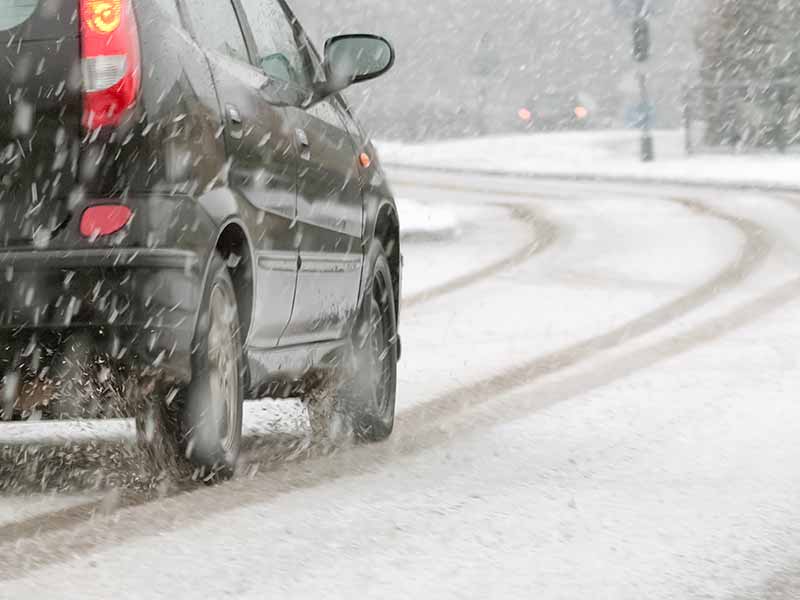Ever looked out the window on a frosty morning, seen the icy roads, and thought, “How fast can I actually drive on this stuff with snow tires?” You’re not alone. The world of tires can seem a bit slippery, especially when it comes to navigating winter roads.
How Fast Can You Drive On Snow Tires?
You can generally drive at the same speed limits as usual with snow tires. However, it’s crucial to adjust your speed based on weather conditions for safety, as even winter tires cannot fully overcome the challenges of slippery snow-covered and icy roads.
In this article, we’ll explore the ins and outs of winter tires, their speed capabilities, driving on highways and long distances, and how they handle icy conditions. We’ll also touch on their extra-tough cousins, studded tires, and discuss important safety measures to consider when driving with snow tires.
Let’s take a closer look.
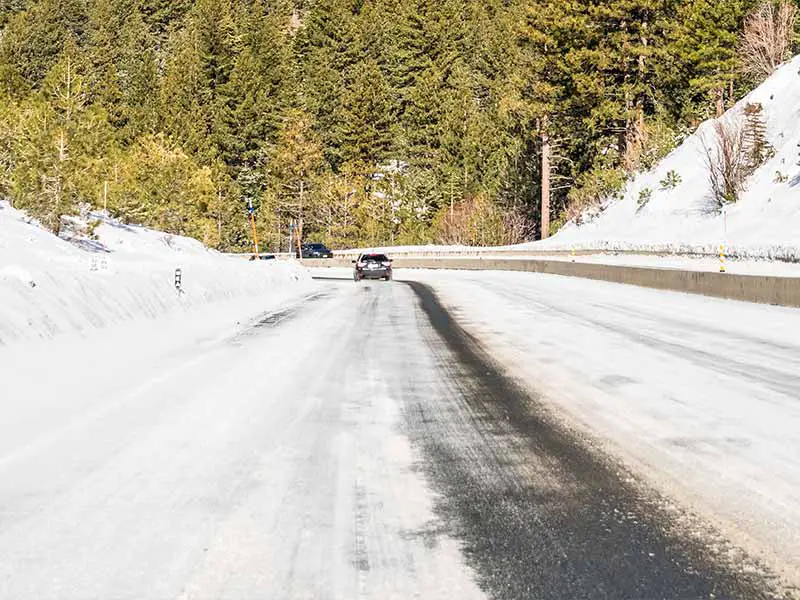
Understanding Winter Tires
Snow tires, also known more properly as winter tires, are designed specifically for cold weather, snow, and ice. They’re like your car’s best buddy during the chilly winter months.
The Anatomy of a Winter Tire
- Tread Rubber: In colder temperatures, the rubber on regular tires can get quite stiff. But the rubber on winter tires? It stays flexible, allowing the tires to grip the road better. That’s like being able to bend your fingers even when it’s freezing out. Handy, right?
- Tread Patterns: The tread patterns on winter tires are unique, too. They’re designed to bite into snow and ice and push water out of the way. Think of them as the soles of winter boots – they prevent you from slipping and sliding.
- Deep Grooves and Sipes: winter tires have deep grooves and small slits called ‘sipes’ that create more biting edges for better snow and ice traction. Imagine having cleats on your shoes for a muddy football game. Those grooves and sipes give your tires a better grip on slippery surfaces.
Are Winter Tires Just for Snow?
Despite the name, snow tires aren’t just for snow. They’re designed to perform in any temperatures below 45 degrees Fahrenheit. They’ve got your back on cold, dry pavement, and yes, they can definitely help when you’re facing icy conditions, too.
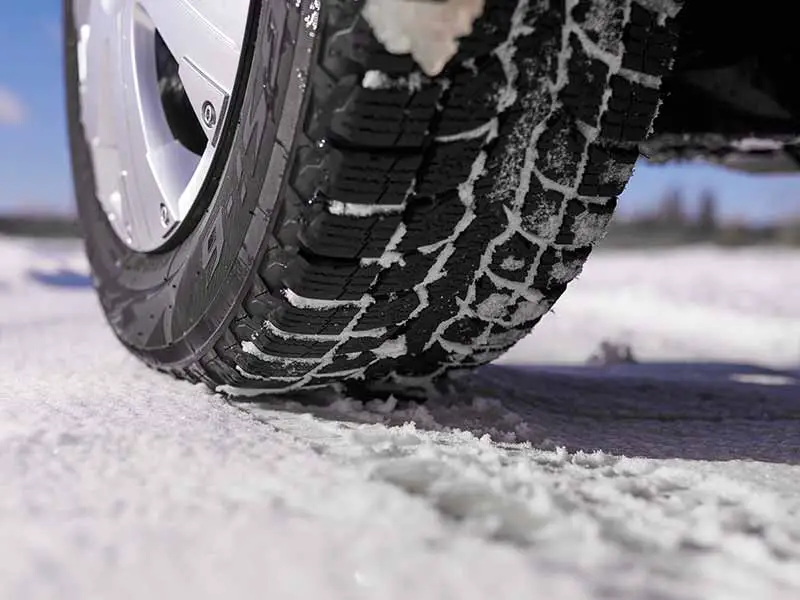
Speed Capabilities with Winter Tires
It’s important to know that all tires, including snow tires, have something called a ‘speed rating’. This rating shows the maximum speed that the tire can safely handle. It’s like the speed limit sign for your tires!
For instance, a tire with a speed rating of ‘T’ can safely handle speeds up to 118 mph. Now, I’m not suggesting you should test this out – safety first, always! But it’s good to know what those letters on your tire mean, right?
Driving Speed with Winter Tires
Winter tires might not have as high a speed rating as some all-season or summer tires. But honestly, when there’s ice and snow on the road, it’s more important to focus on safety than speed.
Your winter tires are designed to give you better grip and control in cold conditions. But remember, they’re not magic! Even with winter tires, you still need to adjust your driving to the weather conditions. That might mean driving slower than you would on a clear, dry day.
Think about it this way: winter tires are like a good pair of hiking boots. They give you better footing, but you still have to watch your step and go a bit slower on rocky or uneven ground.
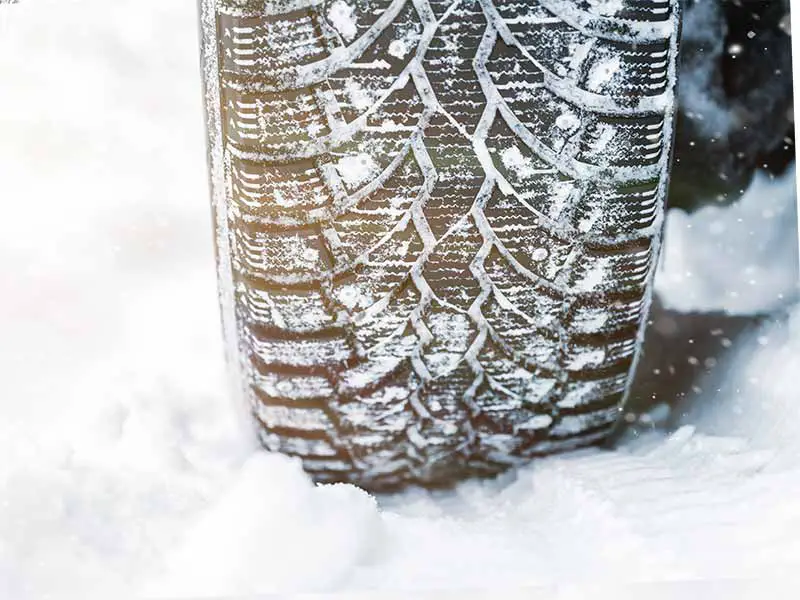
Driving on Highways and Long Distances with Winter Tires
So, you’ve got your winter tires on and you’re ready to hit the open road. But can you drive on the highway with these winter tires? And what about long trips? Well, let’s unpack that!
Highways and Winter Tires?
Can you use winter tires on the highway? You betcha! Winter tires are meant to help you out in winter conditions, whether you’re on city streets or cruising down the highway. They’re designed to give you a better grip on the road, which can be a real lifesaver when you’re dealing with slippery highway conditions.
But remember, just because you’re on the highway doesn’t mean you can push the pedal to the metal. Always make sure to drive at a speed that’s safe for the current road conditions.
Taking Long Trips with Winter Tires
What about going on a long road trip with winter tires? No problem there! Winter tires are designed to handle the cold, whether you’re driving across town or across the country.
But keep in mind, just like any other tire, winter tires can wear down over time. So, before you head out on a long journey, check your tires. Make sure they’re in good shape and properly inflated. And remember, your winter tires might wear out faster if you’re driving on dry roads a lot.
Winter tires are like your favorite pair of running shoes. They can handle a marathon, but they’ll wear out faster if you’re running on concrete all the time. So, just like you’d keep an eye on your running shoes, you’ll want to keep an eye on your winter tires if you’re going on a long trip.
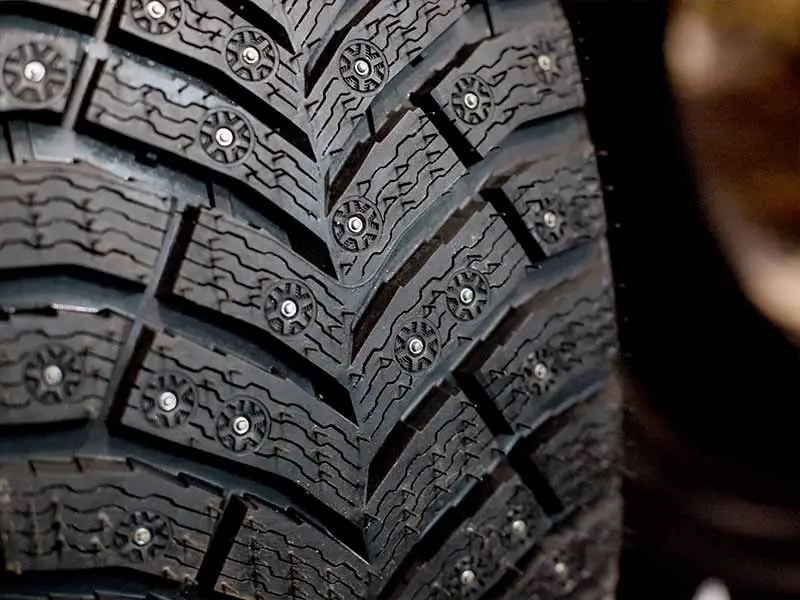
Studded Tires and Speed
We’ve been talking a lot about winter tires, but now it’s time to give some love to their extra-tough cousins: studded tires. These guys are like winter tires with a bit of extra grip. Let’s find out how they handle speed and what makes them unique.
The Lowdown on Studded Tires
Studded tires are winter tires with small metal studs embedded in the tread. Think of these studs as tiny claws that can grip onto icy and snowy surfaces. They give you that extra bit of traction when things get really slippery.
But remember, while these studs are super helpful on ice and packed snow, they can be a bit rough on clear roads. So, they’re best used in places where you’re dealing with a lot of winter weather.
Speed and Studded Tires? It’s Complicated!
Now, let’s talk speed. Can you go as fast with studded tires as you can with regular winter tires? Well, it depends.
Like all tires, studded tires have a speed rating. But the studs can make your ride a little less smooth, and you might notice more road noise. So, even though you might be able to go fast, it might not feel as comfortable.
And just like with regular winter tires, you always want to adjust your speed to the road conditions. Studded tires can give you extra traction, but they’re not invincible. When the roads are icy or snowy, it’s better to take it slow and steady.
Think of studded tires like hiking boots with spikes. They’re great for rough terrain, but you wouldn’t want to sprint in them. And just like you’d be careful on a tricky trail, you’ll want to be careful when driving in tough winter conditions.

Winter Tires and Ice
Now that we’ve chatted about winter tires, studded tires, and how they handle speed, it’s time to tackle a big question: How do winter tires handle ice? You know, that super slippery stuff that makes even walking a challenge? Well, let’s dive in and find out!
Winter Tires vs. Ice: A Slippery Situation
Winter tires are specifically designed to handle cold temperatures and snowy conditions. But when it comes to ice, things get a little tricky. Sure, winter tires will give you better traction than regular tires, but ice is a different beast altogether.
The special tread rubber and unique tread patterns on winter tires can help you out on icy roads. But let’s be clear, driving on ice is always a bit of a slippery situation (pun intended).
Taking It Slow on Ice
Even with winter tires, it’s super important to take it slow and easy when you’re driving on icy roads. Remember, no matter what tires you have on your car, they can’t completely overcome the slipperiness of ice.
Think of it this way: winter tires are like ice skates. They’re designed to move smoothly over ice, but that doesn’t mean you won’t fall if you’re not careful. So, just like you’d skate carefully on a slippery ice rink, you’ll want to drive carefully on icy roads.
Studded Tires to the Rescue?
This is where studded tires can come in handy. Those little metal studs can help grip the ice and give you better traction. But even with studded tires, you still need to take it slow when the roads are icy. Safety first, always!
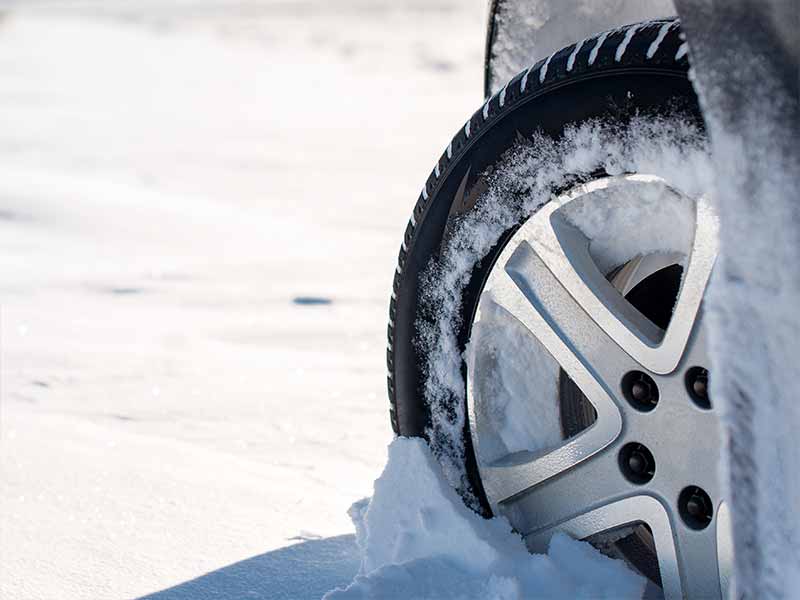
Precautions and Safety Measures when Driving with Winter Tires
We’ve talked about winter tires, studded tires, speed, and ice. Now let’s tackle something super important: safety. Because no matter what kind of tires you have, being a safe driver is key. So, let’s talk about some precautions and safety measures when driving with winter tires.
Adjusting Speed According to Road Conditions
This is something we’ve touched on before, but it’s so important that it’s worth repeating. Always adjust your speed according to the road conditions.
Winter tires can give you better traction in winter conditions, but they can’t change the laws of physics. When roads are slick with ice or snow, stopping takes longer, no matter what tires you’re using. So, slow down, keep a safe distance from the car in front of you, and remember: safety is more important than speed.
Regular Tire Checks
Just like you’d check your hiking boots for wear and tear after a long trail, you should keep an eye on your winter tires. Regularly check your tires for signs of damage and make sure they’re properly inflated. This is especially important before long trips or highway driving.
Smooth and Steady Wins the Race
When you’re driving on slippery roads, smooth and steady is the way to go. Try to avoid sudden starts, stops, or turns. Winter tires give you better grip, but quick movements can still lead to skidding. So, take it easy out there.
Remember, Snow Tires Aren’t Just for Snow
Snow tires are designed to perform in any temperatures below 45 degrees Fahrenheit. They can help you handle cold, dry pavement, and they can definitely help with icy conditions. But remember, they’re not magic. No matter what kind of tires you’re using, safe driving habits are key.
Resources
Below are some links you may find helpful when learning about tires
Final Thoughts
Remember that frosty window we looked out of at the beginning of our journey? Well, now you’ve got the tools to look out at those icy roads and say, “I’ve got this!”
One crucial takeaway from our adventure in the land of snow tires is that while they certainly provide improved traction and handling in winter weather, they’re not invincible. Your safety on the road doesn’t solely depend on what’s wrapped around your wheels, but also on how you handle the steering wheel. Adjusting your speed to the conditions, performing regular tire checks, and remembering that smooth and steady wins the winter driving race are all critical aspects of your journey.
Good luck and happy motoring.
